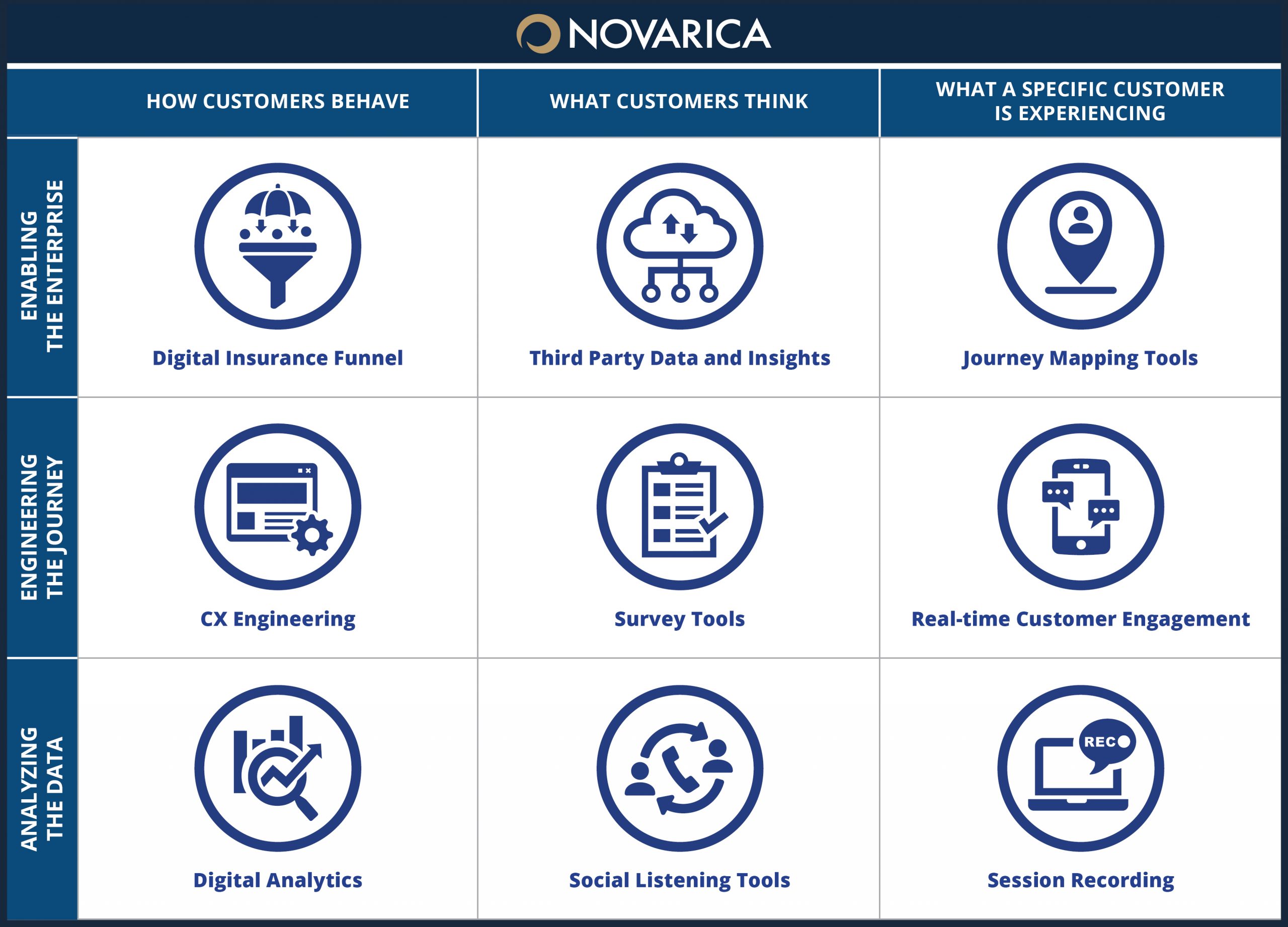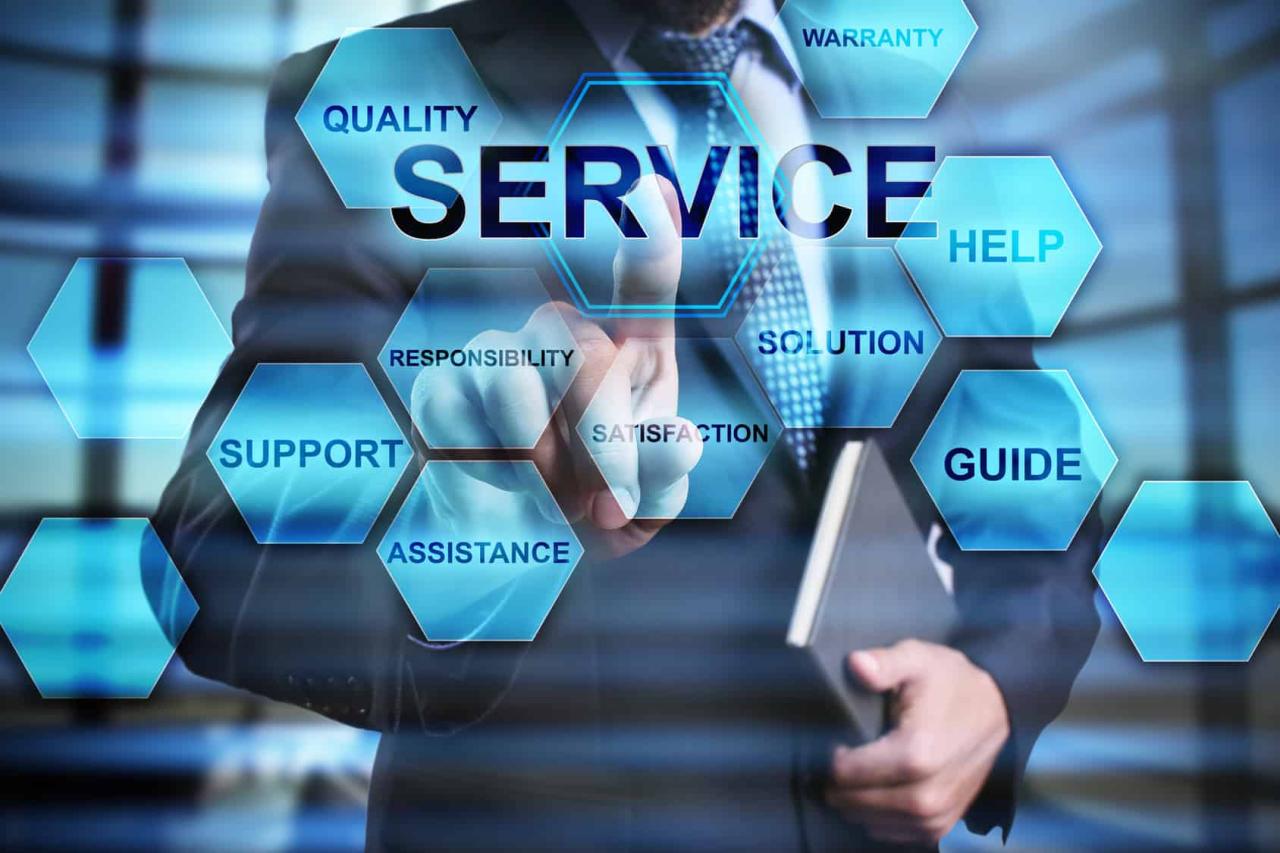CX Technology: Enhancing Customer Experiences
CX technology, the foundation of modern customer engagement, transcends traditional customer service tools. It empowers businesses to understand, anticipate, and cater to individual customer needs, delivering personalized and seamless experiences […]
CX technology, the foundation of modern customer engagement, transcends traditional customer service tools. It empowers businesses to understand, anticipate, and cater to individual customer needs, delivering personalized and seamless experiences across all touchpoints.
From personalized recommendations to proactive support, CX technology encompasses a range of tools and strategies that enable businesses to build lasting relationships with their customers. This comprehensive approach encompasses everything from collecting and analyzing customer data to automating processes and providing real-time assistance.
Key Components of CX Technology
CX technology encompasses a range of tools and platforms designed to enhance customer experiences across all touchpoints. These technologies work together to create a seamless and personalized journey for customers, fostering loyalty and driving business growth.
Customer Relationship Management (CRM) Systems
CRM systems are the foundation of CX technology, acting as a central repository for all customer data. These systems help businesses manage customer interactions, track their preferences, and personalize communication.
- Centralized Customer Data: CRM systems consolidate customer information from various sources, including website interactions, email campaigns, and social media platforms, providing a comprehensive view of each customer. This allows businesses to understand customer behavior, preferences, and purchase history.
- Personalized Communication: By leveraging customer data, CRM systems enable personalized communication through targeted marketing campaigns, tailored product recommendations, and proactive customer support. This creates a more relevant and engaging customer experience.
- Improved Customer Service: CRM systems streamline customer service operations by providing agents with access to customer history, previous interactions, and relevant information. This allows for faster resolution times, reduced wait times, and improved customer satisfaction.
Analytics and Data Platforms
Data analytics plays a crucial role in CX technology, providing insights into customer behavior, preferences, and pain points. These insights help businesses optimize their CX strategies and make data-driven decisions.
- Customer Journey Mapping: Analytics platforms help businesses visualize the customer journey, identifying touchpoints, pain points, and opportunities for improvement. This allows for a more holistic understanding of the customer experience and enables targeted improvements.
- Predictive Analytics: Advanced analytics tools can predict customer behavior, such as churn risk, purchase intent, and product preferences. This allows businesses to proactively address customer needs and prevent potential issues.
- Real-time Data Analysis: Real-time analytics provide insights into customer behavior as it happens, enabling businesses to respond quickly to changing needs and preferences. This allows for a more dynamic and personalized customer experience.
Live Chat and Messaging Solutions
Live chat and messaging solutions offer real-time communication channels for customers to connect with businesses. These solutions provide instant support, personalized interactions, and a convenient way for customers to get help.
- Instant Support: Live chat allows customers to get immediate assistance with their questions or concerns, reducing wait times and improving customer satisfaction.
- Personalized Interactions: Messaging solutions can be used to provide personalized support and recommendations based on customer history and preferences. This creates a more engaging and relevant customer experience.
- Multi-channel Integration: Live chat and messaging solutions can be integrated with other CX technologies, such as CRM systems and analytics platforms, providing a seamless and unified customer experience.
Artificial Intelligence (AI) and Machine Learning (ML)
AI and ML are transforming CX technology by automating tasks, personalizing experiences, and improving customer service. These technologies enable businesses to understand customer needs better and provide more proactive and efficient support.
- Chatbots and Virtual Assistants: AI-powered chatbots and virtual assistants can handle routine customer inquiries, freeing up human agents to focus on more complex issues. This improves efficiency and reduces wait times.
- Personalized Recommendations: ML algorithms can analyze customer data to provide personalized product recommendations and content suggestions. This enhances the customer experience and increases engagement.
- Predictive Maintenance: AI can be used to predict potential customer issues and proactively address them before they arise. This reduces customer frustration and improves overall satisfaction.
Omnichannel Integration
Omnichannel integration ensures a seamless and consistent customer experience across all touchpoints, regardless of the channel used. This allows customers to interact with businesses on their preferred channels and receive consistent information and support.
- Unified Customer View: Omnichannel integration provides a single view of the customer across all channels, allowing businesses to track interactions and preferences regardless of the touchpoint. This ensures a consistent and personalized experience.
- Seamless Transitions: Customers can seamlessly transition between channels without having to repeat information or start over. This creates a more convenient and efficient experience.
- Personalized Journeys: Omnichannel integration allows businesses to personalize customer journeys across all channels, providing tailored experiences based on individual preferences.
Feedback and Survey Tools
Feedback and survey tools provide valuable insights into customer satisfaction and areas for improvement. These tools allow businesses to gather customer feedback, measure sentiment, and identify opportunities to enhance the customer experience.
- Customer Satisfaction Measurement: Feedback and survey tools help businesses measure customer satisfaction levels, identify areas of strength and weakness, and track progress over time.
- Sentiment Analysis: These tools can analyze customer feedback to identify patterns and trends, providing insights into overall customer sentiment and areas for improvement.
- Actionable Insights: Feedback and survey data can be used to make data-driven decisions and implement improvements that enhance the customer experience.
Applications of CX Technology
CX technology is not just about collecting data; it’s about using that data to create meaningful and impactful customer experiences. The applications of CX technology are vast and diverse, touching every aspect of the customer journey.
Personalization and Targeted Messaging
Personalization and targeted messaging are essential for delivering relevant and engaging experiences. By leveraging customer data, businesses can tailor their communication and offerings to individual preferences and needs. This leads to higher customer satisfaction, increased engagement, and ultimately, improved business outcomes.
- Personalized Recommendations: E-commerce platforms like Amazon use purchase history and browsing data to recommend products that align with individual preferences. This personalized approach increases the likelihood of a purchase and enhances the overall shopping experience.
- Targeted Email Marketing: Companies like Netflix analyze viewing habits and preferences to send targeted email campaigns promoting shows and movies that align with individual tastes. This personalized approach increases engagement and reduces the likelihood of unsubscribing.
- Dynamic Content: Websites and apps can display dynamic content based on user behavior and preferences. For example, a travel website might showcase different destinations based on a user’s previous searches or travel history. This personalized approach enhances user engagement and makes the experience more relevant.
Proactive Customer Support and Self-Service
Proactive customer support and self-service empower customers to find solutions independently, reducing wait times and improving overall satisfaction.
- Chatbots and Virtual Assistants: Businesses like KLM Royal Dutch Airlines use chatbots to answer frequently asked questions and provide 24/7 support. This reduces the workload on human agents and allows customers to get instant assistance.
- Knowledge Base and Help Articles: Companies like Apple provide comprehensive knowledge bases and help articles covering a wide range of topics. This allows customers to troubleshoot issues independently and find answers quickly.
- Proactive Notifications: Businesses can leverage data to send proactive notifications, such as shipment updates or reminders about upcoming appointments. This reduces customer anxiety and provides a seamless experience.
Customer Journey Mapping and Optimization
Customer journey mapping is a powerful tool for understanding customer interactions and identifying areas for improvement. By mapping the customer journey, businesses can optimize touchpoints and create a more seamless and enjoyable experience.
- Identifying Pain Points: Mapping the customer journey can reveal pain points, such as long wait times, confusing navigation, or frustrating processes. Businesses can then address these issues and improve the overall experience.
- Optimizing Touchpoints: By analyzing customer interactions at each touchpoint, businesses can identify opportunities for improvement. This might involve streamlining processes, simplifying language, or providing more relevant information.
- Personalizing Interactions: Customer journey mapping provides insights into customer preferences and behavior, allowing businesses to personalize interactions and create more engaging experiences.
Sentiment Analysis and Feedback Collection
Sentiment analysis allows businesses to understand customer emotions and identify areas for improvement. By analyzing customer feedback, businesses can gain valuable insights into what customers like and dislike, and what they would like to see changed.
- Social Media Monitoring: Businesses can use sentiment analysis tools to monitor social media conversations and identify customer feedback. This allows them to address concerns promptly and improve customer satisfaction.
- Customer Surveys: Businesses can use online surveys to collect feedback from customers about their experiences. Sentiment analysis can then be used to identify patterns and trends in customer sentiment.
- Product Reviews: Businesses can use sentiment analysis to analyze product reviews and identify areas for improvement. This helps them understand what customers like and dislike about their products and services.
Predictive Analytics and Forecasting, Cx technology
Predictive analytics uses historical data to forecast future trends and customer behavior. This allows businesses to anticipate customer needs and proactively address potential issues.
- Predictive Maintenance: Companies like GE Aviation use predictive analytics to anticipate potential equipment failures and schedule maintenance proactively. This reduces downtime and improves operational efficiency.
- Demand Forecasting: Businesses can use predictive analytics to forecast demand for products and services. This allows them to optimize inventory levels, adjust pricing strategies, and avoid stockouts or overstocking.
- Customer Churn Prediction: Businesses can use predictive analytics to identify customers at risk of churn. This allows them to take proactive steps to retain customers and improve customer loyalty.
Benefits of Implementing CX Technology
Adopting CX technology can significantly enhance your business operations and customer relationships. It offers a range of benefits that contribute to improved customer satisfaction, operational efficiency, and overall business growth.
Increased Customer Satisfaction and Loyalty
CX technology empowers businesses to understand and respond to customer needs effectively. By collecting and analyzing customer data, companies can gain valuable insights into customer preferences, pain points, and expectations. This data-driven understanding allows businesses to personalize customer interactions, resolve issues quickly, and provide tailored solutions.
- Personalized experiences: CX technology enables businesses to deliver personalized experiences based on individual customer preferences and past interactions. For example, a customer who frequently purchases specific products might receive targeted promotions or recommendations based on their buying history.
- Proactive customer support: CX technology allows businesses to anticipate and address customer issues before they escalate. By monitoring customer feedback and behavior, companies can identify potential problems and proactively offer solutions. This approach minimizes frustration and enhances customer satisfaction.
- Improved customer journey: CX technology helps businesses streamline and optimize the customer journey across all touchpoints. By identifying bottlenecks and inefficiencies, companies can create a seamless and enjoyable experience for their customers.
Improved Operational Efficiency and Cost Savings
CX technology streamlines business processes, automates tasks, and reduces manual effort, resulting in improved operational efficiency and cost savings.
- Automation of tasks: CX technology automates repetitive tasks such as customer service inquiries, order processing, and data entry. This frees up employees to focus on more complex and value-adding activities, improving overall productivity.
- Reduced customer support costs: By resolving customer issues quickly and efficiently, CX technology reduces the need for extensive customer support resources. This translates to lower costs and improved operational efficiency.
- Data-driven decision-making: CX technology provides valuable insights into customer behavior and preferences, enabling data-driven decision-making. This allows businesses to allocate resources effectively, optimize marketing campaigns, and improve product development efforts.
Enhanced Brand Reputation and Competitive Advantage
Positive customer experiences contribute significantly to a company’s brand reputation and competitive advantage. CX technology plays a crucial role in building and maintaining a strong brand image.
- Positive customer reviews and testimonials: Satisfied customers are more likely to leave positive reviews and testimonials, which can influence potential customers and enhance brand reputation.
- Increased customer advocacy: CX technology fosters customer loyalty and advocacy. When customers have positive experiences, they are more likely to recommend the brand to others, driving organic growth and brand awareness.
- Differentiation from competitors: By providing exceptional customer experiences, businesses can differentiate themselves from competitors and gain a competitive edge in the marketplace.
Data-Driven Decision-Making and Insights
CX technology collects and analyzes vast amounts of customer data, providing businesses with valuable insights into customer behavior, preferences, and needs. This data-driven approach enables informed decision-making across various aspects of the business.
- Personalized marketing campaigns: By understanding customer preferences, businesses can tailor marketing campaigns to specific segments, increasing their effectiveness and ROI.
- Product development and innovation: CX technology provides insights into customer feedback and unmet needs, informing product development strategies and fostering innovation.
- Improved customer segmentation: CX technology allows businesses to segment customers based on various factors, such as demographics, purchasing behavior, and engagement levels. This enables targeted communication and personalized experiences.
Personalized and Seamless Customer Interactions
CX technology facilitates personalized and seamless customer interactions across all touchpoints, creating a positive and memorable experience.
- Omnichannel customer service: CX technology enables businesses to provide consistent customer service across multiple channels, including website, mobile app, email, and social media. This ensures a seamless experience regardless of how customers choose to interact with the brand.
- Real-time customer support: CX technology offers real-time customer support through live chat, virtual assistants, and other interactive tools. This provides immediate assistance and resolves customer issues quickly.
- Self-service options: CX technology empowers customers to resolve issues independently through self-service options such as FAQs, knowledge bases, and online tutorials. This reduces the need for human intervention and enhances customer autonomy.
Challenges and Considerations

While CX technology offers significant benefits, implementing it effectively comes with its own set of challenges. Understanding these challenges and taking proactive steps to address them is crucial for successful adoption and maximizing the return on investment.
Data Privacy and Security Concerns
Data privacy and security are paramount concerns in any technology implementation, especially when dealing with customer data. CX technology often relies on collecting and analyzing vast amounts of customer information, raising concerns about data breaches and misuse.
- Compliance with Regulations: Companies must ensure their CX technology solutions comply with relevant data privacy regulations like GDPR (General Data Protection Regulation) and CCPA (California Consumer Privacy Act). These regulations impose strict requirements on data collection, storage, and use, necessitating robust data governance policies and procedures.
- Data Security Measures: Implementing strong security measures is essential to protect customer data from unauthorized access, use, or disclosure. This includes encryption, access control, and regular security audits to identify and mitigate vulnerabilities.
- Transparency and Consent: Transparency is key to building trust with customers. Companies should clearly inform customers about how their data is collected, used, and stored, and obtain explicit consent for data processing activities.
Integration with Existing Systems
Integrating CX technology with existing systems can be complex and time-consuming. Existing systems may not be compatible with new CX platforms, requiring significant customization or data migration efforts.
- Data Integration Challenges: CX technology often requires integrating data from various sources, such as CRM systems, marketing automation platforms, and customer support tools. This can involve data mapping, transformation, and ensuring data consistency across different systems.
- System Compatibility: Compatibility issues between CX technology and existing systems can arise, requiring adjustments to ensure seamless data flow and functionality.
- API Integration: Using APIs (Application Programming Interfaces) for integration can streamline the process, but careful planning and testing are essential to ensure data integrity and security.
Cost of Implementation and Ongoing Maintenance
Implementing CX technology can involve significant upfront costs, including software licenses, hardware upgrades, and professional services. Ongoing maintenance and support costs must also be factored in.
- Initial Investment: The cost of acquiring and deploying CX technology can be substantial, particularly for large enterprises with complex systems and a wide customer base.
- Ongoing Maintenance: Maintaining CX technology requires regular updates, security patches, and ongoing support. These costs can add up over time.
- ROI Measurement: Measuring the return on investment (ROI) of CX technology can be challenging, but it is essential to justify the costs and ensure ongoing value.
Training and Adoption by Employees
Successful CX technology implementation requires employee buy-in and effective training. Employees need to understand how the technology works, its benefits, and how to use it effectively to enhance customer experiences.
- Change Management: Introducing new technology can disrupt existing workflows and require employees to adapt to new processes. Effective change management strategies are crucial to minimize resistance and ensure smooth adoption.
- Training and Support: Providing comprehensive training programs, user guides, and ongoing support can help employees become proficient in using CX technology.
- Employee Engagement: Engaging employees in the implementation process and soliciting their feedback can foster a sense of ownership and improve adoption rates.
Measuring and Tracking ROI
Measuring the ROI of CX technology can be complex, requiring clear metrics and a robust tracking system. It is important to define key performance indicators (KPIs) and track their impact on customer satisfaction, loyalty, and business outcomes.
- Defining KPIs: Identify relevant KPIs that align with business goals, such as customer satisfaction scores, Net Promoter Score (NPS), conversion rates, and customer lifetime value.
- Data Analytics: Use data analytics tools to track KPIs, identify trends, and measure the impact of CX technology initiatives.
- Attribution Modeling: Establish a clear attribution model to determine the specific contributions of CX technology to business outcomes.
Future Trends in CX Technology
The field of CX technology is constantly evolving, driven by advancements in artificial intelligence, data analytics, and user experience design. This dynamic landscape presents exciting opportunities for businesses to enhance customer interactions and build stronger relationships. Here are some of the most significant future trends in CX technology:
The Rise of Conversational AI and Chatbots
Conversational AI, powered by natural language processing (NLP) and machine learning (ML), is revolutionizing how businesses interact with customers. Chatbots, driven by conversational AI, are becoming increasingly sophisticated, capable of understanding complex queries, providing personalized responses, and even handling transactions.
- Chatbots are now being used in a wide range of applications, including customer support, lead generation, and e-commerce.
- They can be integrated into various channels, such as websites, messaging apps, and social media platforms.
- The ability of chatbots to learn and adapt over time allows them to provide increasingly accurate and relevant responses.
For example, a chatbot can be used to handle basic customer support inquiries, such as password resets or order tracking, freeing up human agents to focus on more complex issues.
Integration with the Internet of Things (IoT)
The Internet of Things (IoT) is connecting devices and appliances to the internet, creating a wealth of data about customer behavior and preferences. CX technology is increasingly leveraging this data to personalize experiences and provide proactive support.
- IoT devices can collect data on customer usage patterns, product performance, and environmental factors.
- This data can be used to anticipate customer needs, provide personalized recommendations, and optimize product functionality.
- For example, a smart refrigerator could automatically reorder groceries based on consumption patterns or alert the user to potential maintenance issues.
The Use of Augmented Reality (AR) and Virtual Reality (VR)
Augmented reality (AR) and virtual reality (VR) technologies are blurring the lines between the physical and digital worlds, creating immersive experiences that enhance customer engagement.
- AR can be used to overlay digital information onto the real world, such as product demos, virtual try-ons, or interactive maps.
- VR can create fully immersive experiences, allowing customers to virtually explore products, spaces, or services.
- For example, a furniture retailer could use AR to allow customers to visualize how different furniture pieces would look in their homes.
Data-Driven Personalization and Hyper-personalization
The ability to collect and analyze customer data is driving a shift towards personalized and hyper-personalized CX experiences. Businesses are leveraging data to understand customer preferences, behaviors, and needs, enabling them to tailor interactions and offers accordingly.
- Data-driven personalization can be used to recommend products, provide relevant content, and offer targeted promotions.
- Hyper-personalization goes a step further, using advanced analytics and AI to create highly customized experiences based on individual customer profiles.
- For example, a streaming service could recommend movies based on a customer’s viewing history and preferences.
Ethical Considerations and Responsible AI
As CX technology becomes more sophisticated, it’s crucial to consider the ethical implications of its use. Businesses need to ensure that their CX technology is used responsibly and ethically, respecting customer privacy and promoting fairness and transparency.
- Data privacy and security are paramount concerns, and businesses must implement robust measures to protect customer information.
- AI algorithms should be designed to avoid bias and discrimination, ensuring that all customers are treated fairly.
- Transparency is essential, and customers should be informed about how their data is being used and how AI is influencing their experiences.
Final Conclusion
By embracing CX technology, businesses can unlock a world of possibilities, transforming customer interactions into valuable relationships. From increased customer satisfaction and loyalty to improved operational efficiency and competitive advantage, the benefits are undeniable. As CX technology continues to evolve, businesses must adapt and embrace the latest innovations to stay ahead in today’s dynamic landscape.
CX technology is all about enhancing customer experiences, and a key aspect of that is creating a comfortable and productive environment. For those who need to focus, the Quiet Technologies Halo Headset offers a solution by blocking out distracting noise.
This kind of technology is a great example of how CX can be applied to create a better overall experience for individuals, ultimately leading to increased productivity and satisfaction.





